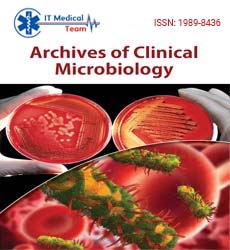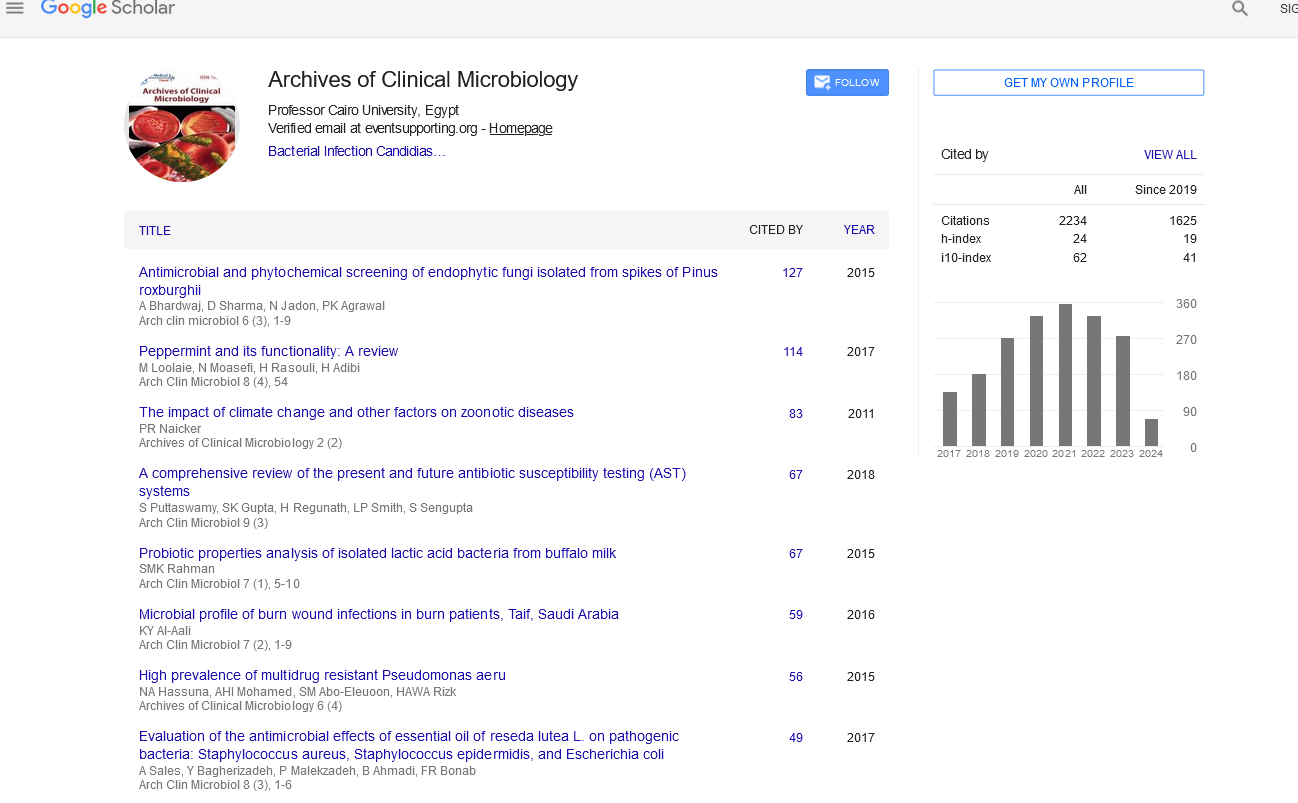Keywords
Onychomycosis; Clacofluor; Fusarium spp; Dermatophyte; PAS stain; GMS stain; Sikkim; Karnataka.
Introduction
Onychomycosis contributes to 50% of all nail disorders and represents 30% of all superficial skin fungal infections [1-3].
It is distributed worldwide and presents in different forms in different parts of the world. The predisposing factors range from advancing age, trauma, geo-climatic conditions, occupation, social class, immune status of the host and associated superficial mycoses like tinea pedis [1]. There is a probabil ity that different regions of the same country with different environmental conditions may present with varied levels of incidence [4].
The present study was carried out to study the etiological agents causing onychomycosis in the Indian states of Sikkim and Karnataka.
Gangtok is the capital of the Indian state of Sikkim, a landlocked geographical region with coordinates 27.330N; 88.620E situated in the eastern Himalayas. It has a total area of 7096 sq km with total population of 0.6 million. Temperature ranges from sub-zero during winters to 280c during summer seasons. The average humidity is 86% with annual rainfall varying between 2000mm to 4000 mm.
The town of Manipal falls under the coastal district of Udupi with coordinates 13021’N; 74045’E in the state of Karnataka, south west India. The temperatures range between 400c during summers to 200c during winters. The average rainfall is 4000mm.
Material and Methods
This was a prospective study undertaken from January 2007 to August 2008 In Manipal and from August 2009 to November 2010 in Gangtok, after acquiring clearance from the ethical comittee of both the institutes. Patients attending the dermatology outpatient department were screened for onychomycosis.
Inclusion criteria- patients with clinical features suggestive of onychomycosis like roughening, thickening, discolouration, who had given their consent after being informed about the study, were included into the study.
Exclusion criteria - Patients on prior antifungal therapy (> 4 weeks) and those with lichen planus, psoriasis, allergic dermatitis were excluded from the study.
Nail clippings and nail scrapings were collected in sterilised derma packs and divided into two parts, one part was used for direct microscopy and the other for culture. Rapid screening of the specimen was done by KOH- calcofluor white (Sigma Aldrich) fluorescent stain method in Kasturba medical college, Karnataka and by KOH microscopy using compound microscope in STNM Hospital. They were further subjected to histopathological examination by using Periodic Acid Schiff stain and Gomori’s Methenamine Silver stain in STNM hospital.
Sabourauds dextrose agar with chloramphenicol, and cycloheximide was used for isolation of dermatophytes and incubated at 28oC for 3 weeks. Two tubes of sabourauds dextrose agar with chloramphenicol were inoculated with the specimen. One was incubated at 370 C and the other kept at 28oC for 3 weeks.
Identification of the Filamentous/Yeast fungi was done based on the macroscopic and microscopic features as per the standard mycological methods.
Interpretation of mycological results. [5]
Dermatophyte
For a dermatophyte to be reported as the etiologic agent, it was necessary for it to be grown in culture irrespective of the microscopy findings.
Non dermatophyte mould and Candida species
In the case of non dermatophyte mould and Candida species, fungal spores, filaments or yeast had to be observed under the microscope in addition to culture being positive for these organisms.
Whenever direct microscopy showed filaments and only a non dermatophyte grew, it was considered positive only if the same organism grew on a repeat second culture.
Results
In KMC Manipal, Karnataka, Nail clippings and scrapings from 70 patients with signs of onychomycosis were processed. Culture was positive in 24 patients and fluorescent microscopy in 26 patients. Fusarium spp was the most common isolate. After following the interpretation criteria fluorescence microscopy was positive in 22 patients (Figure 1) and culture in 24 patients. Culture was taken as the gold standard and when calcofluor white microscopy was compared to the culture, sensitivity of calcofluor white microscopy was 88% and specificity was 94.11%. The pathogens isolated are shown in Table 1 and the demography of the patients in Table 2.

Figure 1: Fungal isolates with calcofluor white stain under fluorescence microscopy. Magnification 400X

Table 1. Fungal isolates from KMCH, Manipal and STNM hospital, Gangtok.

Table 2. Demographic profile of the patients.
In STNM Hospital, Sikkim 53 patients were studied. Culture was positive for 18 patients and KOH Microscopy in 26 patients. Deramtophyte were the most common isolate. 34 samples were sent for histopathological examination by periodic acid schiff stain and Gomoris Methenamine silver staining. Out of the 34 samples sent for histopathological analysis 13 were positive by either PAS or GMS staining method (Figure 2). Both PAS and GMS were positive in 5 patients, only PAS positive in 3 patients and only GMS positive in 5 patients. Patient positivity by different methods employed is shown in Table 3. Unpaired t-test was used to statistically analyse the different test. A significant difference was seen between KOH microscopy and culture. (p value 0.0007).

Figure 2. Hyaline hyphae with GMS stain. Magnification 400X

Table 3. Patient positivity by different methods.
Discussion
The most common pathogen causing onychomycosis in Manipal were the non dermatophyte mould followed by Dermatophytes, and Candida spp. The results are unlike previous studies done in India as in all these studies Dermatophyte was the most common etiological agent. [6,7] Fusarium spp is normally discarded as an environmental contaminant when isolated from an immunocompetent patient but there is mounting evidence to prove otherwise [8,9,10] When a non dermatophyte is isolated every effort should be made to rule out its role in the infection process. Non dermatophytes like Fusarium spp have shown high MIC levels to itraconazole [8] and others like Scytalidium dimidiatum and Onychocola canadensis are poorly responsive to systemic treatments. [10]
Trichophyton rubrum was the most common isolate in STNM Hospital, Sikkim. This result is similar to previous studies where Trichophyton rubrum has been the most common Dermatophyte. [11,12,13]. The increased prevalence of Trichophyton rubrum maybe because of better adaptation of the fungus to the hard keratin of the nails.
Two different genus of fungi were isolated from Manipal and Gangtok. A difference in geography, climate and temperature affects the lifestyle and every day habits of the population. In Manipal 5 people regularly wore closed footwear the rest preferred to wear open sandals due to the hot humid climate exposing the nails to trauma. The area around Manipal is an agricultural area which may have facilitated the contact of the population with Fusarium - a geophilic fungus. In Gangtok 14 people wore closed footwear for long periods of time. Athropophilic dermatophytes are known to grow well at 37°C [14] and the hot and moist environment created by the shoe may have favoured its growth.
Examination of the nail clippings under fluorescent microscope after treating with 20% KOH and counterstaining with calcofluor white fluorescent stain is a very sensitive and accurate method of diagnosing onychomycosis [1]. In a study that compared calcofluor white microscopy with KOH and culture, sensitivity of fluoresence microscopy was 92% and specificity of 95%. [15]
Periodic acid-Schiff (PAS) stain is more commonly used as compared to Gomori methenamine silver (GMS) stain. Some studies have considered PAS stain superior to culture and KOH microscopy for the diagnosis of onychomycosis. [16] When GMS stain was compared with PAS stain, GMS was found to be more sensitive and superior in detecting fungal hyphae in tissues. [17] Our study also reiterates this fact where GMS staining was found more sensitive.
Conclusion
Different geographical regions may have different etiological agents causing onychomycosis due to variation in climatic condition that affects the lifestyle of the people. It is important to recognise, identify and confirm onychomycosis due to non dermatophyte filamentous fungi as some of them may require a longer duration of treatment as compared to dermatophytes and a few others may not be responsive to even newer antifungal agents. Correct identification of the causative pathogen is imperative to aid clinicians in choosing the appropriate therapy.
Conflict of Interest
No conflict of interest relevant to this article was reported.
135
References
- Baran R, Hay RJ, Haneke E, Tosti A (2006). Onychomycosis: The Current Approach to Diagnosis and Therapy. 2nd Edition. Boca Raton, FL: Taylor & Francis.120p.
- Elewski B E (1998) Onychomycosis: Pathogenesis, Diagnosis, and Management. ClinMicrobiol Rev: 415-429.
- Faergemann, J. Baran, R (2003) Epidemiology, clinical presentation and diagnosis of Onychomycosis. Brit J Dermatol 149 (65):1-4
- Rogopoulos D, Katsiboulas V, Koumantaki E, Emmanouil P, Papanicolaou A, et al. (1998) Epidemiology of Onychomycosis in Southern Greece. Int J Dermatol 37:925-928.
- Summerbell RC. Mould identification. Clinical Microbiology Procedure Handbook. Ed in Chief Isenberg HD: 2nd edVol 2 ASM press.pp 8.9.44-8.9.47
- Garg A, Venkatesh V, Singh M, Pathak KP, Kaushal GP, et al. (2004) Onychomycosis in central India: a clinic etiologic correlation. Int J Dermatol 43:498-502.
- Kaur R, Kashyap B, Bhalla P (2007) A five year survey of Onychomycosis in New Delhi, India: epidemiological and laboratory aspects. Ind J Dermatol 52(1):39-42.
- Guilhermetti E, Takahachi G, Shinobu CS, Svidzinski TIE (2007). Fusariumspp as agents of Onychomycosis in immunocompetent hosts.Int J of Dermatol 46:822-6.
- Gianni C, Ceeri A, Crosti C (2000) Non Dermatophyticonychomycosis. An underestimated entity?A study of 51 cases. Mycoses 43:29-33.
- Gupta AK, Ryder JE, Summerbell RC (2003) The diagnosis of nondermatopphytic mold onychomycosis. Int J Dermatol 42:272-273.
- Romano C, Gianni C, Difuzo EM (1985) Retrospective study of Onychomycosis in Italy. Mycoses 48:42-44.
- Illkit M (2005) Onychomycosis in Adana, Turkey – A five year study. Int J Dermatol 44:851-854.
- Kam KM, Au WF, Wong PU, Cheung MM (1997) Onychomycosis in Hong Kong. Int J Dermatol 36:757-761.
- Dvorak. J, Hubalek Z (1969) The growth of dermatophytes at 4 ° C and 37 ° C; the relation of this character to others. MycopatholMycolAppl 38 (3):305- 312.
- Panisiti V, Borroni RG, Devirgillis V, Rossi M, Fabbrizio L, et al. Comparison of diagnostic methods in the diagnosis of dermatomycosis and Onychomycosis. Mycoses 49:26-29.
- Gupta AK, Ricci MJ (2006) Diagnosing Onychomycosis. Dermatol Clinic 24:365-69.
- D’Hue, Perkin S.M, Billings S.D (2008) GMS is superior to PAS for diagnosis of onychomycosis. J CutanPathol 35:745-747










